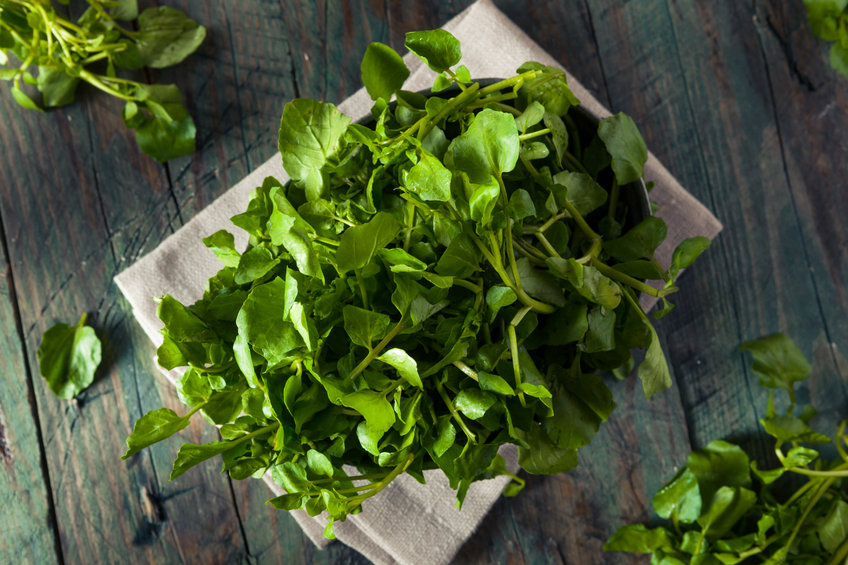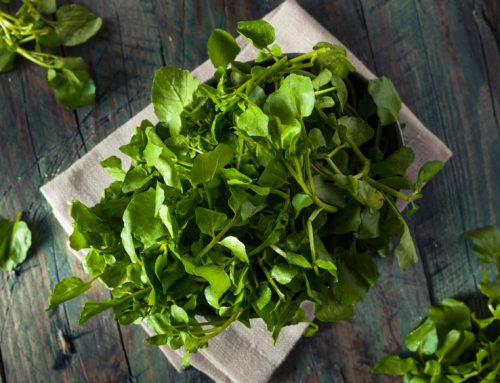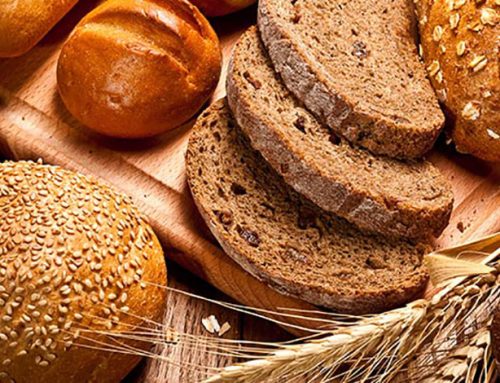What is watercress? According to a new classification scheme created by the Centers for Disease Control, it is the healthiest veggie on earth.
For years, kale and açaí have been considered the ultimate nutrient-packed superfoods. But a new contender might be taking the throne.
The CDC has crowned watercress as the healthiest produce option [1]. The agency assigns nutrition density scores to fruits and vegetables based on their essential vitamins and minerals concentration.
What Is Watercress?
Watercress (Nasturtium officinale) is a semi-aquatic plant that naturally grows in springs and shallow waters. Belonging to the mustard family, watercress is related to collard greens, cabbage, kale, Brussel sprouts, turnips and radishes.
If you’re unfamiliar with what it looks like, it’s a cluster of glossy, small, round, green leaves with circular edges attached to light green hollow stems. The flavor is pungent and peppery, with a fresh, leafy scent similar to arugula. The flowers are typically not eaten.
During the peak season from late spring to early summer, you can find watercress in specialty food markets, local grocery stores and farmers’ markets. Watercress can also be grown hydroponically year-round. (Hydroponics is a method of growing plants without soil.)
Watercress Nutrition
One cup of raw watercress contains:
• 4 calories
• 0.8 g protein
• 0 g fat
• 0 g carbohydrate
• 0 g fiber
• 15 mg vitamin C
• 85 mcg vitamin K
Health Benefits
Watercress may not be your typical fiber-rich vegetable. Still, it’s a nutrient-dense green that provides a good source of vitamin C and an excellent source of vitamin K, as well as a range of other nutrients, such as vitamin A, manganese, riboflavin and vitamin B6.
In addition, watercress may offer the following health benefits.
Promotes hydration
Drinking a glass of water isn’t the only way to hydrate. Eating vegetables such as watercress may also have the same effect. In fact, watercress is one of the many leafy greens made up of almost entirely water: 95% of watercress is water.
Consuming enough fluids, particularly water, is essential for all bodily functions, including moving nutrients and waste through the body, maintaining healthy blood pressure, controlling body temperature, preventing dehydration and more.
Supports building bones
Eating 1 cup of raw watercress provides all the vitamin K you need for the day. This fat-soluble vitamin is not only important for blood clotting but also supports bone formation. Some studies suggest that high consumption of vitamin K may increase bone density and reduce the risk of hip fractures. A review of studies published in the journal Medicine also noted that participants with the highest intake of vitamin K had a 22% reduction in the risk of fractures compared to those with the least amount of vitamin K in their diet.
May reduce cancer risk
It is a good source of vitamin C. This nutrient has a long list of health benefits, including supporting collagen production to keep your hair, nails, skin and joints healthy. Vitamin C also has immune-boosting and wound healing properties.
In addition, vitamin C may also help fend off free radicals that may damage body cells by preventing the formation of certain cancer-causing compounds. A meta-analysis of studies published in The American Journal of Clinical Nutrition found that a diet rich in vitamin C, primarily from vegetables and fruits, may lower cancer risk.
May lower heart disease risk
You may be surprised that vitamin C also protects the heart. Many studies, including one published in Public Health Nutrition, have noted that eating a more produce-packed diet (and this would include watercress) may lower one’s risk of heart disease. The antioxidant and anti-inflammatory properties found in vitamin C may support blood vessel function to guard against heart attack.
May support vision
Watercress is a rich source of lutein and zeaxanthin. These carotenoids also act as antioxidants, potentially lowering the risk of age-related eye diseases and cataracts. Research suggests that eating foods containing lutein and zeaxanthin may help protect eye health.
Watercress, a dark leafy green that grows in natural spring water, teems with vitamins and minerals that could be particularly good for your heart [2]. Historically, people have used it as little more than a garnish. However, it is now gaining popularity as one of the latest superfoods.
Watercress has existed for ages and may have even been a dietary staple for Roman soldiers. Belonging to the same cruciferous family as kale, broccoli, arugula and Brussels sprouts and has a rich history. It treated various conditions, including hypercholesterolemia, hyperglycemia, hypertension, arthritis, bronchitis, diuresis, odontalgia and scurvy [3].
So, how can you make the most of this newfound superfood? It is commonly enjoyed in salads but can also be added to pasta dishes, casseroles and sauces [4]. Because of its tender nature, it cooks faster than heartier greens like kale and collard greens and it imparts a mild, slightly peppery flavor to any dish.
When selecting watercress, look for vibrant green leaves that are crisp and not wilted. Keep it in the fridge and use it within a few days of purchase for optimal freshness.
How to Use It
Here are some creative ways to incorporate watercress into your diet:
• Add a few handfuls to your favorite fruit juice or smoothie.
• Add it to your next omelet or scrambled eggs.
• Whip up a watercress-based pesto.
• Mix chopped watercress into pasta sauce.
• Freshly grated Parmesan, olive oil, and ground black pepper quickly sautéed watercress.
• Enjoy it as a side or a topping for baked potatoes.
• Watercress is an excellent addition to wraps, sandwiches and flatbread.
• Stir it into soups just before they finish cooking.
With its remarkable nutrient content and potential health benefits, watercress has officially earned its spot as a nutritional powerhouse. So, why not give this underappreciated green a chance to shine in your meals? Your body might thank you for it.
Click here to get more answers to what is watercress.







